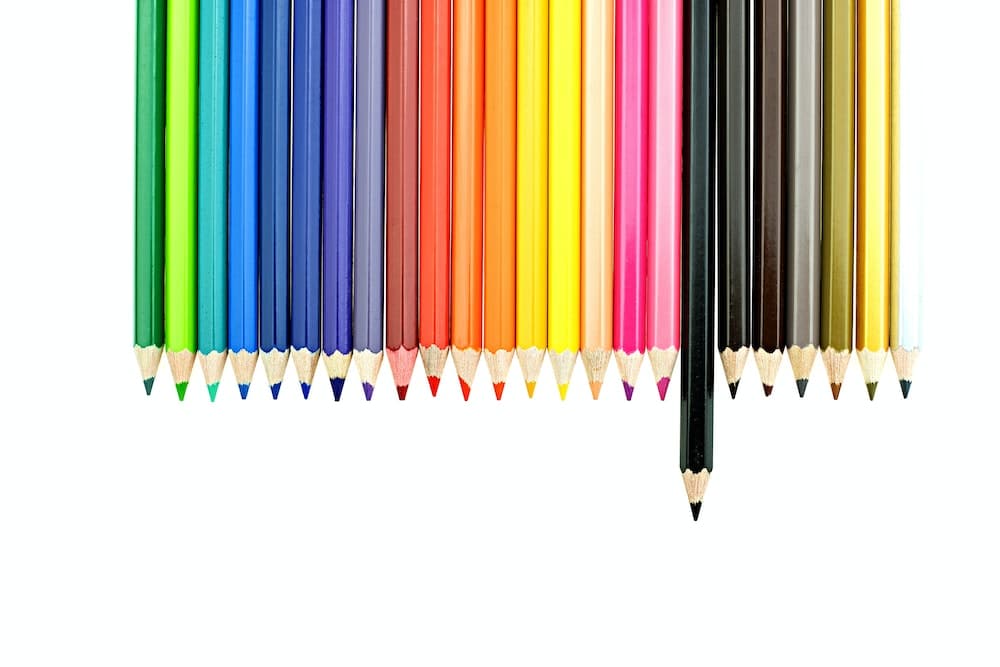How to Utilize a Color Wheel to Plan Your Work Outfits for the Week?

Planning your work outfits for the week does not have to be a stressful process. Using a color wheel as your guide, you can create a wardrobe strategy that will simplify your mornings and enhance your style. The color wheel, a visual representation of color theory, is a tool that can help you understand how colors relate to each other. By understanding the principles behind the color wheel, you can create harmonious color schemes that will elevate your fashion sense and make dressing for work a breeze.
Understanding the Basics of the Color Wheel
The color wheel is a circular design that displays the spectrum of colors that we see. It consists of primary colors – red, blue, and yellow – that cannot be created by mixing other colors. The secondary colors – green, orange, and purple – are obtained by combining two primary colors. Tertiary colors, formed by mixing a primary color with an adjacent secondary color, also find their place on the wheel.
Dans le meme genre : How Do You Choose the Right Type of Cardigan for a Layered Office Look?
When planning your work outfits, the color wheel plays an integral role. It aids in identifying color schemes that work well together and helps you make smart style decisions. This ensures that your wardrobe remains diverse, vibrant, and eliminates the chances of clashing colors. Now, let’s delve into the process of how you can effectively use the color wheel to style your outfits.
Creating a Capsule Wardrobe with the Color Wheel
A capsule wardrobe consists of a minimal number of items that can be mixed and matched to create a variety of outfits. With the help of a color wheel, you can build a capsule wardrobe that is not only versatile but also color coordinated.
A découvrir également : How Can You Balance Comfort with Style in Work-Appropriate Maternity Clothing?
Firstly, choose a base color. This is the color that will be the most visible in your wardrobe. Typically, staple pieces like trousers, skirts, or blazers come in neutral colors like black, white, and blue. These colors are chosen because they’re easy to match with other colors.
Next, choose your accent colors. These colors will add life to your wardrobe and make your outfits pop. For example, if your base color is black, you might choose red or green as your accent colors.
Finally, think about texture and pattern. The color wheel is also useful for coordinating patterns and textures in your wardrobe. For instance, if you have a red dress with a floral pattern, you could pair it with a green cardigan to create a harmonious outfit.
How to Determine Complementary, Analogous, and Triadic Colors
According to color theory, there are three primary color schemes that you can create using the color wheel: complementary, analogous, and triadic.
Complementary colors sit directly opposite each other on the color wheel. For instance, red and green are complementary colors. Pairing complementary colors together creates a vibrant, high-contrast look.
Analogous colors are groups of three colors that are next to each other on the color wheel. For instance, blue, blue-green, and green are analogous colors. These colors work well together to create a harmonious, low-contrast look.
Triadic colors are three colors that are evenly spaced around the color wheel. For instance, red, blue, and yellow form a triadic color scheme. This color scheme is bold and vibrant, yet balanced.
Using Color Psychology to Enhance Your Work Outfits
Colors are not just visually appealing; they also carry psychological associations that can influence how others perceive you. For example, wearing red can make you seem confident and powerful, while blue can make you appear calm and trustworthy.
By understanding color psychology, you can choose outfits that convey the message you want to send. If you want to appear assertive and dynamic, opt for strong, bold colors like red or orange. If you want to convey a sense of calm and stability, go for cool colors like green or blue.
How to Incorporate Trends Without Overdoing It
While it’s important to develop a personal style, it’s also fun to experiment with trends. However, it’s essential not to let trends dictate your wardrobe entirely. Instead, use them as a way to inject new life into your established color scheme.
A color wheel can guide you on how to incorporate new colors into your existing wardrobe without clashing. For example, if the fashion forecasts are all about pastels but your wardrobe is predominantly earth tones, you could opt for a pastel accessory to add a touch of trendiness while still keeping your overall look grounded.
Remember, the goal is to create a wardrobe that’s versatile, stylish and uniquely you, not to have a closet full of trend-led pieces that will go out of fashion in a season or two.
The Role of Your Skin Undertone in Choosing Your Color Palette
Knowing your skin undertone can significantly increase the effectiveness of your wardrobe plan using the color wheel. Your skin undertone is the color beneath the surface. You can be a cool (blue or pink undertone), warm (yellow or gold undertone), or neutral (a mix of warm and cool). Understanding your skin undertone can help you choose the colors that suit you best and highlight your features.
For instance, people with cool undertones look great in deep blues, rich purples, and emerald greens, mirroring the cool shades on the color wheel. Those with warm undertones can rock earthy hues like forest green, mustard yellow, and rustic reds – aligning with warm colors on the color wheel. Neutrals have the advantage of looking good in a wide variety of colors, although they should avoid wearing colors that are too vibrant or bold.
To determine your skin undertone, look at the inside of your wrist. If your veins appear blue or purple, you have a cool undertone. If they appear green, you have a warm undertone. If it’s hard to tell, you likely have a neutral undertone.
Once you’ve established your undertone, you can plan your color palette for your capsule wardrobe. Always remember, the goal is to enhance your natural features using the color theory.
Decluttering Your Closet Using the Color Wheel
Before incorporating the color wheel into your wardrobe, it’s essential to declutter your closet. This includes getting rid of clothes you haven’t worn in a while, pieces that don’t fit you well, or items that are out of style. Remember, the goal is to create a versatile, high-quality capsule wardrobe that simplifies your life.
Start by categorizing your clothes into piles based on their colors. Next, evaluate each piece keeping in mind your color analysis, your lifestyle, and your style preferences. Check if the colors in your existing wardrobe align with your color scheme based on the color wheel.
During this process, you might realize that your closet is filled with colors that don’t truly complement your skin undertone or your personal style. You may also find gaps in your wardrobe – perhaps you’re missing a staple black blazer or you have too many similar items.
Decluttering gives you a clean slate to rebuild your wardrobe. It allows you to make room for clothes that will truly fit your style, personality, and color palette.
Conclusion
Planning your work outfits using the color wheel is a strategic way to simplify your daily routine and ensure you always look your best. From understanding the basics of primary, secondary and tertiary colors to creating a color-coordinated capsule wardrobe, the color wheel is an indispensable tool.
Remember, the key is to understand your skin undertone, create a balanced color scheme, and incorporate colors, patterns, and textures that enhance your natural features. By decluttering your closet and aligning your wardrobe with the color wheel, you can create a versatile, stylish closet that reflects your unique style.
So, why not give the color wheel a spin? It could be the key to unlocking your style potential and transforming your wardrobe. And remember, fashion is all about self-expression, so don’t be afraid to break the rules and add your personal touch. After all, you are the artist of your style, and the color wheel is just your palette.
